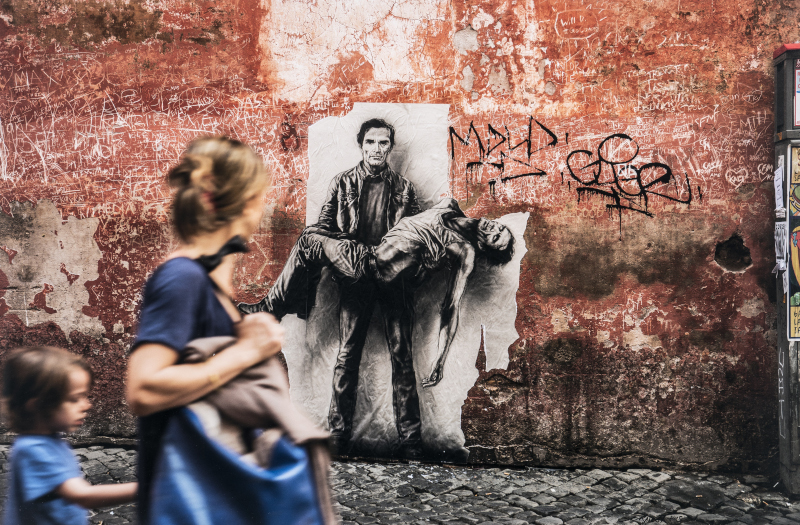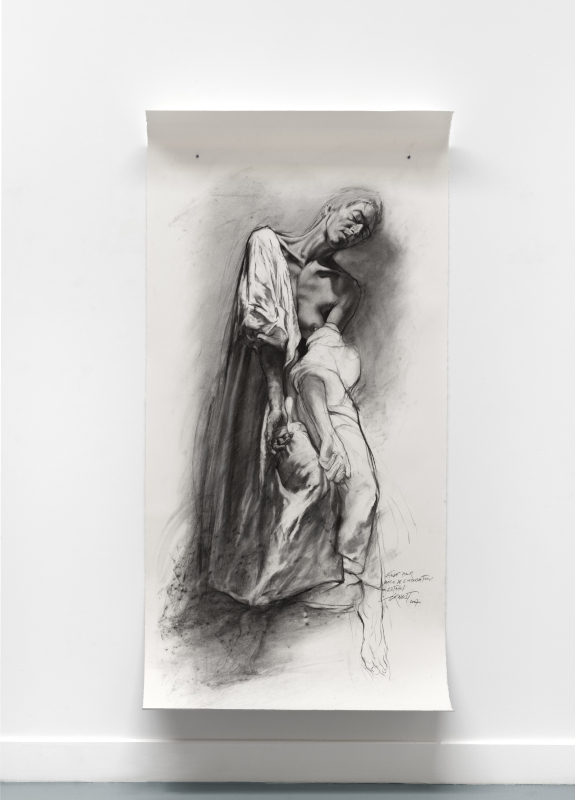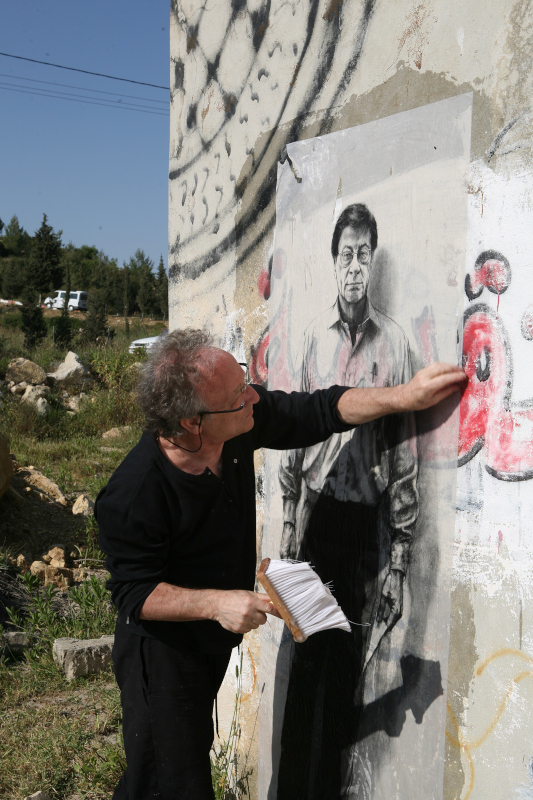Ernest Pignon-Ernest. L'ÉCHO DU MONDE.
The exhibition
Ernest Pignon-Ernest, who "doesn't aim to make works in situations" but "to make works of situations", is exhibiting his work this summer at Le Doyenné in Brioude.
Ernest Pignon-Ernest is well known for his drawings, which are used in public and shared spaces. Through them, he succeeds in highlighting the history that inhabits these sites. In 1966, he was so deeply affected by the presence of the French strike force in the Vaucluse that he decided to use the streets of a small village where he lived as a backdrop for his work. From there, the artist decided to combine a piece of reality with an element of fiction to create his works and, above all, to evoke the traces of the past for all viewers.
A pioneer of urban art in France, he is particularly interested in the symbolic impact of his work's association with the site. The exhibition at Le Doyenné brings together over a hundred of his drawings and sketches, as well as nine series of photographs of his installations in Naples and in prison. His work as a whole bears witness to the singularity of his practice, forcing him to consider both the viewer's point of view and the space itself. Only drawing can resolve these paradoxical constraints. Acting as a simulacrum, drawing manages to oscillate between an effect of reality and fiction.
However, in 2012, when he depicted both unknown and famous figures in Lyon's prisons for his 'Resistants' series, he was not taking part in a fiction, but in keeping alive the memory of the souls who inhabited these places before they were turned into universities.
Orlane Bachelet
Ernest Pignon-Ernest is well known for his drawings, which are used in public and shared spaces. Through them, he succeeds in highlighting the history that inhabits these sites. In 1966, he was so deeply affected by the presence of the French strike force in the Vaucluse that he decided to use the streets of a small village where he lived as a backdrop for his work. From there, the artist decided to combine a piece of reality with an element of fiction to create his works and, above all, to evoke the traces of the past for all viewers.
A pioneer of urban art in France, he is particularly interested in the symbolic impact of his work's association with the site. The exhibition at Le Doyenné brings together over a hundred of his drawings and sketches, as well as nine series of photographs of his installations in Naples and in prison. His work as a whole bears witness to the singularity of his practice, forcing him to consider both the viewer's point of view and the space itself. Only drawing can resolve these paradoxical constraints. Acting as a simulacrum, drawing manages to oscillate between an effect of reality and fiction.
However, in 2012, when he depicted both unknown and famous figures in Lyon's prisons for his 'Resistants' series, he was not taking part in a fiction, but in keeping alive the memory of the souls who inhabited these places before they were turned into universities.
Orlane Bachelet
When
01/07/2023 - 15/10/2023


